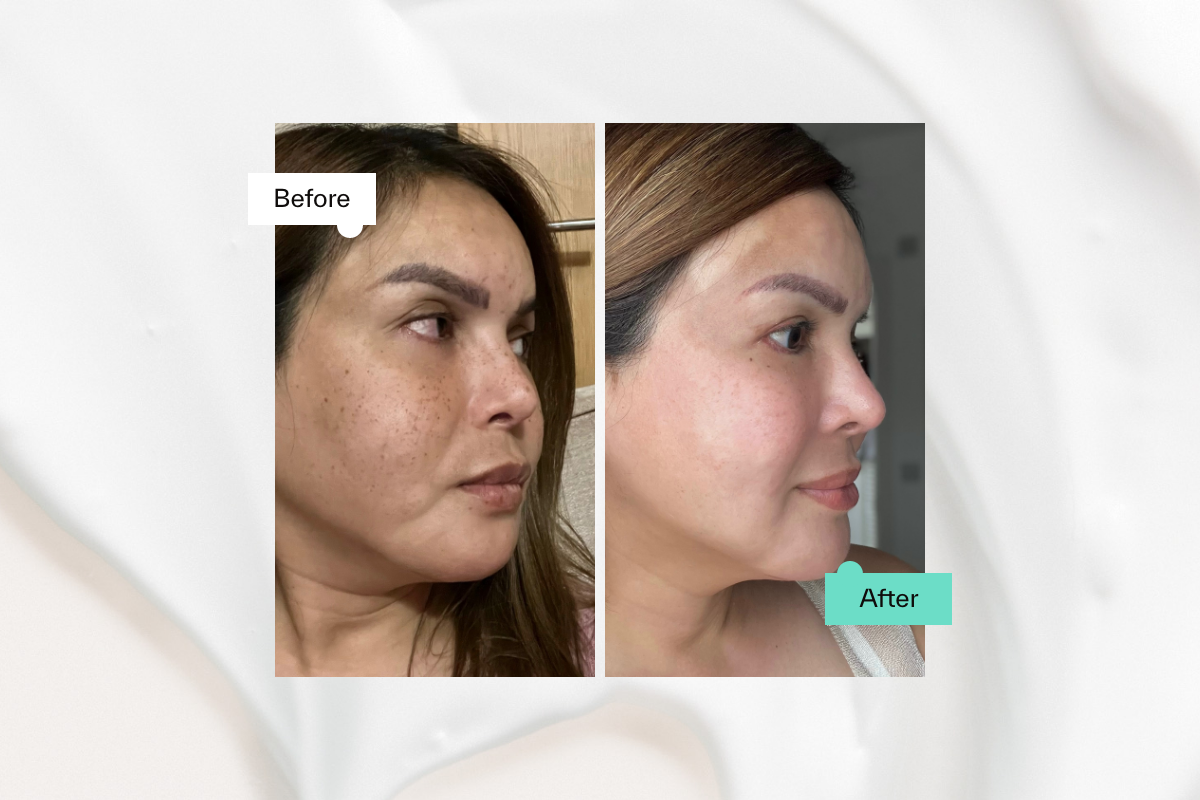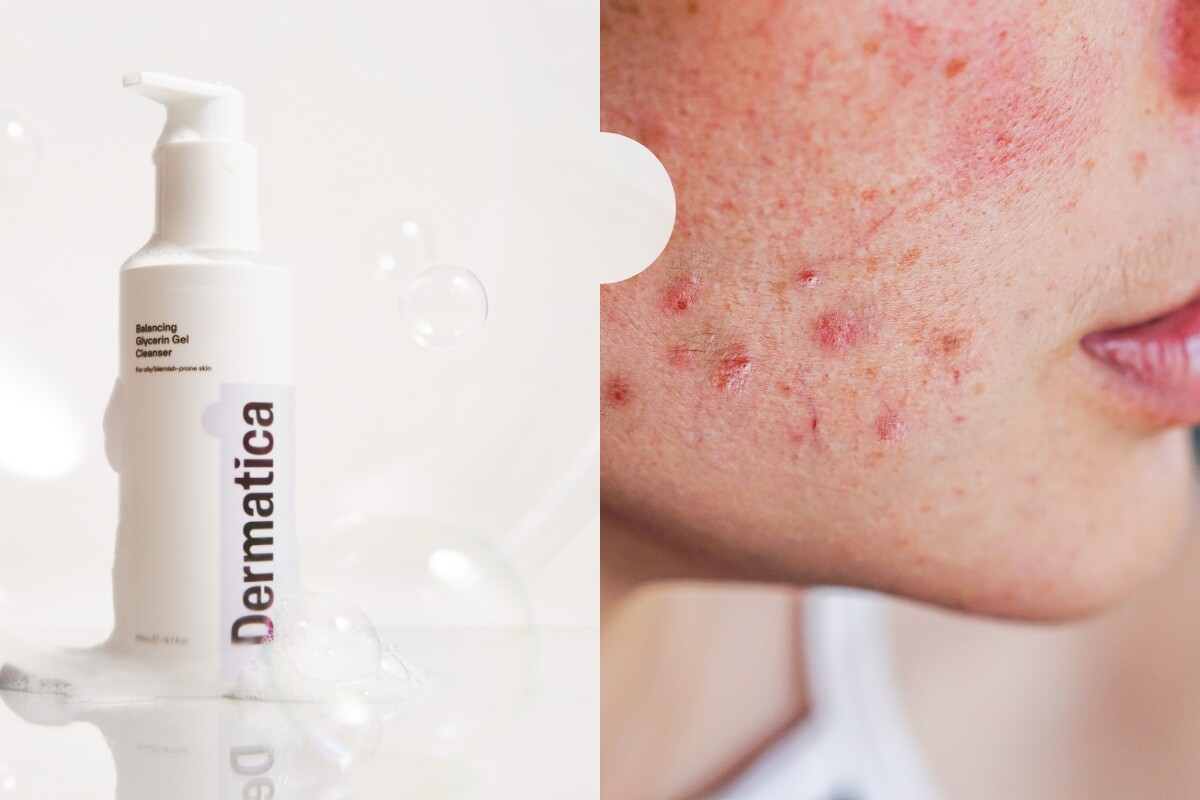Heard of benzoyl peroxide but not sure what it can do for your skin? Our dermatologists explain why this prescription active ingredient is an important first line of treatment for mild to moderate acne – also known as acne vulgaris. (1)
What Is Benzoyl Peroxide?
Benzoyl peroxide is a widely used, scientifically-proven topical treatment of mild, moderate and severe acne vulgaris because of its antimicrobial and anti-inflammatory activity. It can be found in soaps, gels, creams and prescription formulas in concentrations from 1% to 10%. (2)
How Does Benzoyl Peroxide Work?
When applied to the skin benzoyl peroxide breaks down and releases oxygen, which helps reduce the growth of acne bacteria (cutibacterium acnes). (3) It also increases cell turnover in a similar way to retinoids by exfoliating the skin and removing the dead skin cells. This helps unclog pores to prevent new spots from forming and removes mild blackheads and whiteheads (comedones).
Acne Treatment With Benzoyl Peroxide
Benzoyl peroxide treatments can be used alone, or it can be combined with other ingredients like retinoic acid (e.g. adapalene) and antibiotics erythromycin or clindamycin or oral antibiotics like Doxycycline to help combat more than one acne symptom at once e.g reducing inflammation, killing acne-causing bacteria or unclogging pores. Formulating benzoyl peroxide with multiple ingredients can help decrease acne-causing bacteria. And because formulas that contain benzoyl peroxide don’t cause bacterial resistance, this ingredient can be particularly effective for patients that have developed topical antibiotic resistance. (3)(1) Here at Dermatica, our personalised formulas for acne typically combine benzoyl peroxide (at a strength of 2.5%) with ingredients like Azelaic acid 15%, Adapalene 0.1%, Niacinamide 4% or Clindamycin 1% depending on the severity of the acne and treatment length.
The Side Effects Of Using Benzoyl Peroxide
Benzoyl peroxide is known to be well tolerated by most skin types – including sensitive skin and those breastfeeding, pregnant or trying to conceive – and the incidences of skin irritation are low. The most common side effects are sensitivity, erythema, peeling and dryness. If you are using benzoyl peroxide for acne and it causes irritation, this can be relieved by using lower concentrations or applying your formula less frequently. (4)
Maintaining A Skincare Routine To Manage Acne Long Term
It’s important to have a hydrating, balancing, barrier-supporting skincare routine that will help take care of your skin during and after your benzoyl peroxide treatment. To maintain your results, our dermatology experts recommend using a mild cleanser, clarifying azelaic acid and moisturiser designed specifically for blemish-prone skin every morning to prevent future breakouts. Then at the end of the day, using your cleanser and azelaic acid again followed by your personalised formula. We recommend making sure your products meet the latest NICE guidance for blemish-prone skin and contain non-comedogenic skincare ingredients that won’t clog pores again.
Check out our guide to soothing acne-prone skin to learn more, or discover which formulas are suitable for your skin by visiting our website.
Benzoyl Peroxide As A Treatment For Acne: Before and After Photo
Skin condition: acne
Treatment ingredients: adapalene, benzoyl peroxide, niacinamide
Dermatica customer Ela, 9 months
References
1. Sagransky M, Yentzer BA, Feldman SR. Benzoyl peroxide: a review of its current use in the treatment of acne vulgaris. Expert Opinion on Pharmacotherapy. 2009 Sep 17;10(15):2555–62.
2. Taylor GA, Shalita AR. Benzoyl Peroxide-Based Combination Therapies for Acne Vulgaris. American Journal of Clinical Dermatology. 2004;5(4):261–5.
3. Matin T, Goodman MB. Benzoyl Peroxide [Internet]. PubMed. Treasure Island (FL): StatPearls Publishing; 2020. Available from: https://www.ncbi.nlm.nih.gov/books/NBK537220/
4. Cotterill JA. Benzoyl peroxide. Acta Dermato-Venereologica Supplementum [Internet]. 1980;Suppl 89:57–63. Available from: https://pubmed.ncbi.nlm.nih.gov/6162349/
Caroline Ferry
Caroline Ferry is a freelance journalist and copywriter, who has written for Grazia Magazine, Harper's Bazaar, Tatler and Elle and consults for many skincare, fragrance and fashion brands.
Ash Sharma
Dr Ashwin Sharma is a medical doctor and writer with a particular interest in health technology, artificial intelligence and medical weight loss. He completed his training at the University of Leicester and Imperial College London, and has since been exploring the intersections of medicine, technology, and communication.





